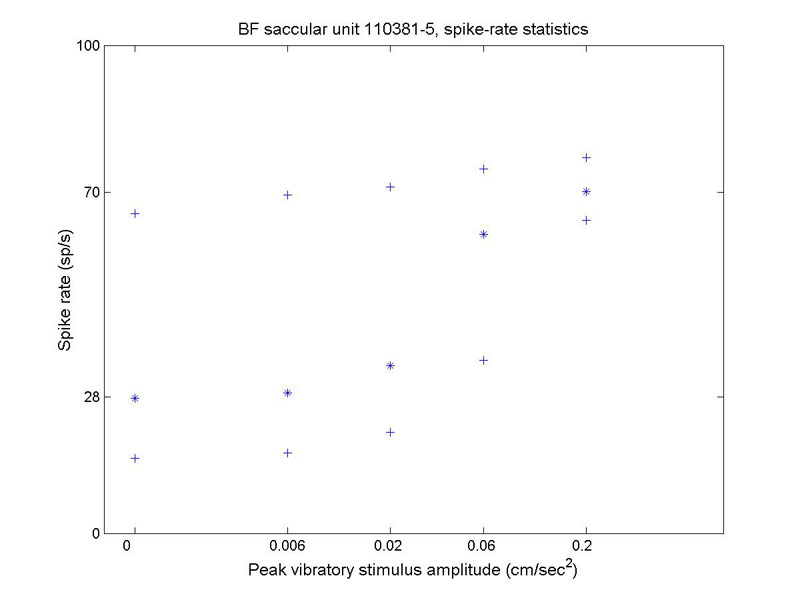| back to text |

|
The mean spike rate (depicted as a star) was computed in the absence of applied stimulus
(0 stimulus level) and for four amplitudes of a 70-Hz dorsoventral vibratory stimulus. The
root-mean-square difference between the mean spike rate and 1/T (T being the time interval
between successive spikes) was computed separately for values below and above the mean.
The results are depicted as crosses. This provided an estimate of the background noisiness
in the unit's resting activity and in its responses. As the stimulus intensity increased,
this unit responded with increasing tendency to produce one spike per stimulus cycle.
For the 70-Hz stimulus, this led to an increase in mean spike rate from the resting level
of 28 sp/s to a maximum level of 70 sp/s. As stimulus intensity increased further, the
unit tended to place that spike within an increasingly narrow range of stimulus phase.
In these respects, this unit's response is representative of all the bullfrog saccular
units we have examined with stimulus frequencies greater than 30-40 Hz. At lower stimulus
frequencies, saccular units tend to produce 2 spikes per stimulus cycle.
most recently updated 08/15/07